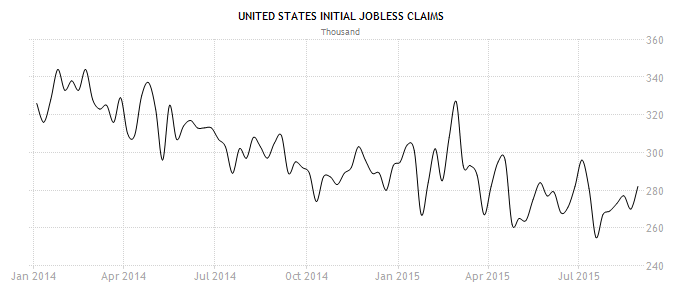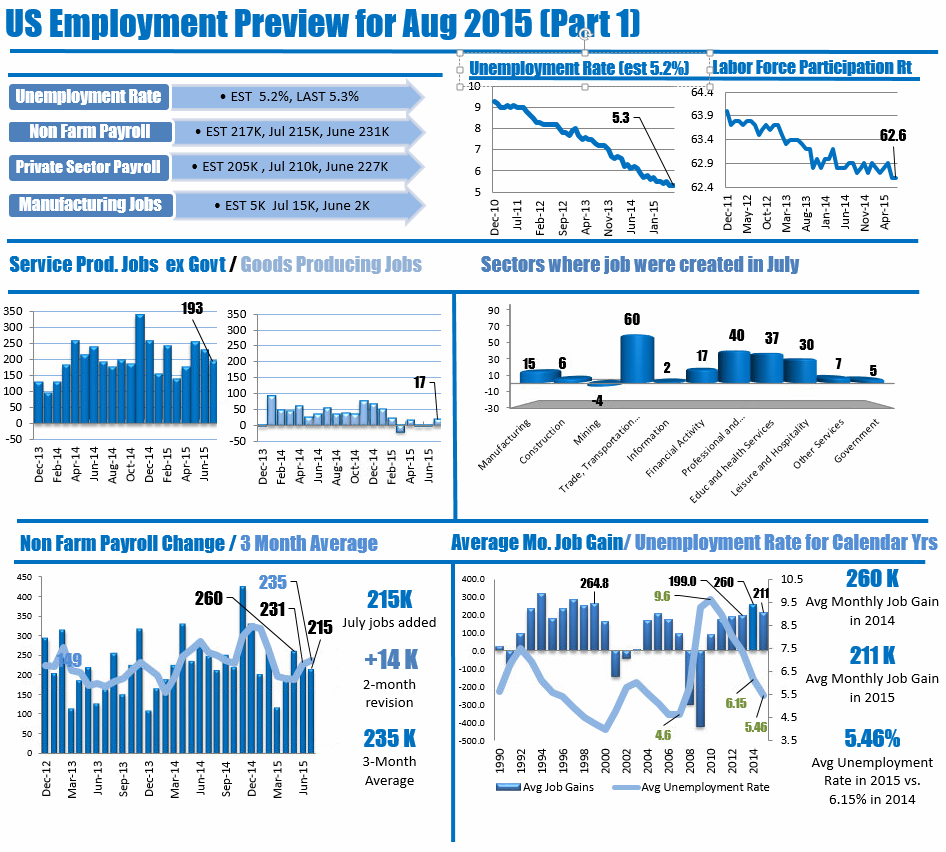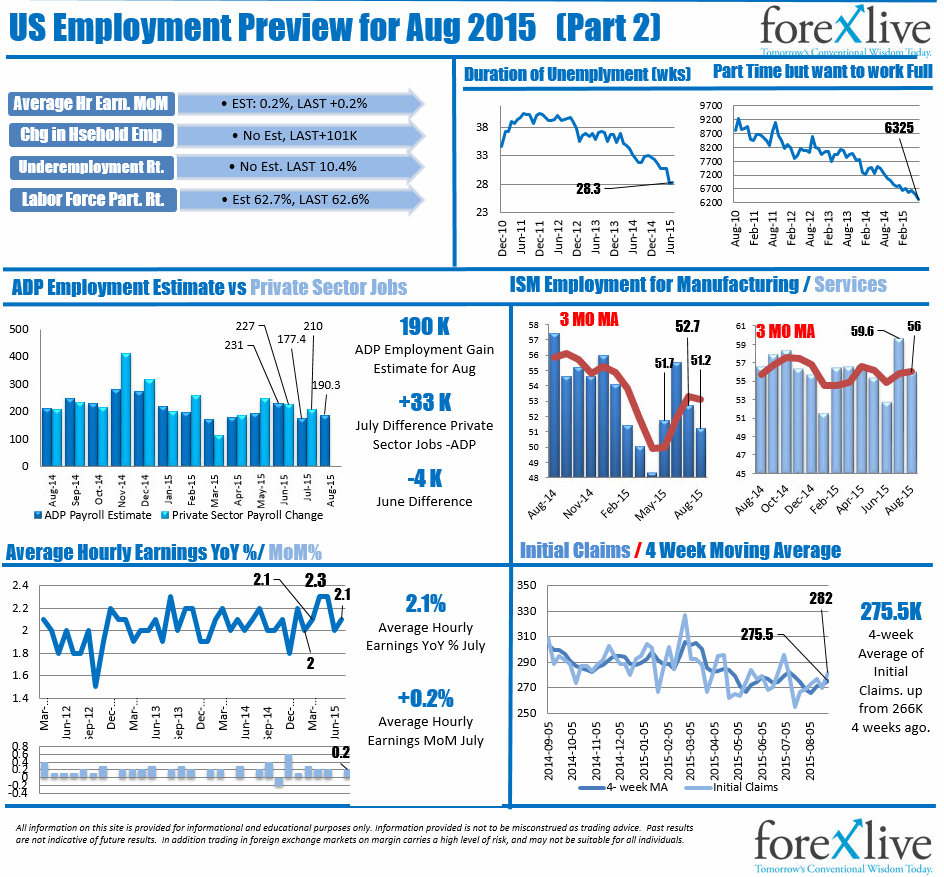
by Chris Becker
Its the biggest event on the economic calendar tonight with US unemployment rate for August, called the non-farm payroll or NFP. Its the most important because unemployment determines the fate of interest rate easing and tightening by the US Federal Reserve. Given we’ve had no rate rises for over eight years, as unemployment fell from a post-GFC high of nearly 10% to 5.3% currently:

Last night saw a preview of the NFP surprise to the downside, with weekly initial jobless claims peaking to a new eight week high, although this has to be kept in context of the declining trend:

The chaps at Forexlive have 2 excellent infographics previewing the data tonight estimates pointing to a reduction to 5.2% on the headline rate:


And Chris Weston at IG:
With interest rate markets currently pricing in a 30% probability of a September hike in interest rates from the Federal Reserve, 42% for October and 57% for December, tonight’s US non-farm payrolls report (22:30 AEST) could be an important piece of the economic jigsaw.
With the market having debated when the Fed will hike the fed funds rate for many months and any adjustment in monetary policy carrying huge implication for the US and emerging market economies, what we really need is certainty. Will that come tonight?
Keep in mind Richmond Fed member Jeffrey Lacker (voter) speaks 20 minutes before the jobs data. His speech is titled ‘the case against further delay’.
Expectations
The market consensus is that we see 218,000 jobs created, with the economist estimates ranging from 253,000 to 120,000. The unemployment rate is expected to tick down to 5.2%, moving into the Fed’s target for where they see full-employment.
Average hourly earnings (yoy) are expected to increase a modest 2.1%. The U6 unemployment rate (the broadest measure of employment) fell to 10.4% in July – the lowest level since July 2008. This needs to be watched.
The traditional leading indicators suggests a robust jobs print tonight, with the August ADP private payrolls coming in at 190,000, while the employment sub-component index of the services ISM report at 56.0.
The simplified playbook
250,000+ jobs – Clearly the best result all round. On this result US bond yields push aggressively higher, in turn putting a strong bid into the USD. Emerging market assets will likely be sold aggressively (I specifically like long positions in USD/BRL). A point of contention is whether US equities rally given we should see the implied probability of a near term increase in the fed funds rate. My view is a 250,000+ print would provide increased clarity around Fed policy and this should prove to be a strong positive for US equities, although others will argue against this view.
I would also look at spike in implied volatility. Being long Volatility index futures would work well in this environment.
165,000 to 180,000 jobs created – This is the grey area and the scenario I feel is actually the worst case for market participants. If you are an economist who has September or October pencilled in for Fed rate hikes then you probably wouldn’t amend that view, but the growth in job creation is lacklustre and provides the least amount of clarity. I would personally expect a modest sell-off in the USD, with USD/JPY likely to push back into the ¥119.50 area.
US equities would not know where to turn, but I suspect traders would focus on the unemployment rate or hourly earnings much closer and drill into the report for inspiration.
150,000 and under – Clearly the 30% probability that is priced into the September meeting would be reversed and this means strong buying in US treasuries across the curve. It means a much weaker USD and given the extended nature of AUD short positions (held by leveraged funds) I would look for a move in AUD/USD into $0.7150 to $0.7200.
Emerging markets currencies would rally aggressively given how unloved they are at present. US equities would likely sell-off, although again there are some who feel the opposite is true and we get a stimulus invoked rally. Given global growth has been a concern for investors and traders I suspect these risks will resurface and US equities will be sold.
Keep in mind that August is traditionally a poor month of job creation relative to expectations. As Deutsche points out August employment has missed consensus in 21 out of the last 27 years. More recently the last four Augusts have missed consensus by a sizeable 55,000.
The takeaway is even if the unemployment rate drops to 5% or even lower, its wage growth and inflation that completes the triumvarate of data the Fed – doves and hawks combined – is really looking at before putting their hands on the interest rate lever.